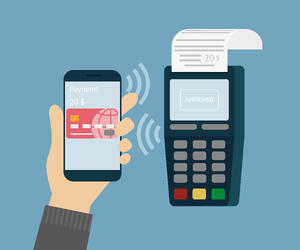When it comes to mobile payments, Africa has been the world leader for years, with skyrocketing usage rates in many of its countries tied to efforts to serve unbanked citizens.

Mobile payment activity tied to bank accounts in the U.S. and other developed countries has lagged behind, but that’s about to change in a big way.
The Cardless Future is Nearly Here
Cash can be considered “Money 1.0” and credit and debit cards “Money 2.0." According to David Marcus, president of Paypal, we’re experiencing the birth of “Money 3.0,” with transactions tied directly to bank accounts, courtesy of the mobile revolution.
A Visa study discovered that Americans were twice as likely to carry a phone as they were to carry cash, with 18- to 34-year-olds more than four times as likely to do so. Most of us are walking around with phones that are actually tiny networked computers that are significantly more powerful than the desktops of a decade ago. This technology has provided a clear opening for the mobile payments industry, and its leaders have taken aggressive action.
Mobile payments amount to around $50 billion each year in America, and eMarketer estimates they will hit $58 billion by 2017. Research firm Forrester is even more bullish, predicting $90 billion in mobile payment activity by 2017, and more than $142 billion by 2019.
A Mobile Win-Win for Businesses and Consumers
To some extent, it seems that mobile payment technology may be able to sell itself, thanks to a laundry list of potential benefits for customers and businesses. Businesses are already enthusiastic about the convenience and speed of mobile payments, which allow them to complete transactions even quicker when compared to standard credit cards. Even transaction costs are expected to fall. Several mobile payment providers like Dwolla and Google Wallet already offer rates that beat the fees for plastic sales in some circumstances.
Increased adoption of mobile payments is expected to reduce the waste of “floating cash,” which occurs when cash transactions are lost in the shuffle and the value “floats” away through holes in the bureaucratic net.
Mobile payments are also expected to provide a safer, more secure alternative to credit cards, which are notoriously vulnerable to hacking and identity theft. This is doubly true in the U.S., which has lagged behind most of the world when it comes to credit card technology. Even the Atlanta Federal Reserve views mobile payments as a safer bet, thanks to a faster, more secure pipeline from payment to processing that provides fewer opportunities for thieves.
Downsides for Mobile Payments and Digital Money
While the transaction itself may be safer, mobile payments will still depend on a digital records infrastructure that remains vulnerable to hacking and theft, as demonstrated by the litany of high-profile bank intrusions making headlines every year.
Because the first generation of mobile payments in the U.S. will be tied to bank accounts, the nearly 10 million unbanked households in America presents an additional challenge for mobile payments. However, given the wild success of a mobile payment system intended specifically to address unbanked customers in Africa, even that concern is not insurmountable.


